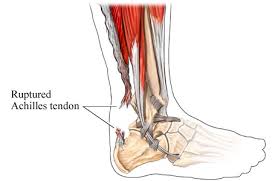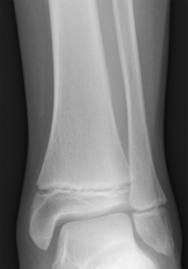Wednesday, June 12th, 2013

Are you a Weekend Warrior? A Weekend Warrior is an individual who participates in sports at a level for which they are not in proper shape or physically conditioned. A Weekend Warrior injury is what we call the injury that occurs as a result.
These injuries most commonly occur when adults who do not exercise regularly go out after work or on the weekends to play sports thinking “I’ve got this covered.” Unfortunately, when we are working full-time and when we do not exercise regularly our muscles, tendons and ligaments lose strength. Weekend Warrior injuries can occur when any part of our body that has not been exercised regularly is strained by the force of movement: Shoulders, backs, and calves....no where is immune.
A common Weekend Warrior injury is a strain, pull or rupture of the Achilles tendon. That lay up that used to come so easily can pull the Achille’s tendon with such extreme power that an injury occurs; the pivoting and changing direction when playing basketball or tennis happens so rapidly that it may cause a rupture of the Achille’s tendon or strain elsewhere.
Studies have shown that the force put on the achilles tendon can be up to 10 times your body weight when performing extreme changes in direction. An achilles tendon that is "conditioned" can endure this force, but one which is not can quite easily rupture.
As the summer starts we want to remind all those Weekend Warriors out there to be careful as you head out to play with your children or friends. It is important to condition and strengthen before heading out to the courts, fields and beaches and to remember to start slowly and build endurance week by week.
So, be careful and smart as you head off to play. Remember to start slowly and build up strength. But, if you get hurt....Suncoast Urgent Care is here when you need us!
Tuesday, May 28th, 2013

When it is suspected that a child has broken a bone it is important to determine whether or not the growth plate has been injured. But what is a growth plate? And what does it mean if the growth plate is injured?
Growth plates are special areas along the bone that allow for growth. These areas along the bone are actually cartilage that generates new cells which, in time, form bone as children grow. These areas are fragile and are easily injured. When a growth plate is injured continued growth at that site may become impaired which is the reason it is important to follow any injury to a growth plate carefully.
Growth plates are cartilage and they are seen as black lines on an x-ray. It is often not possible to see growth plate injuries on an x-ray unless the injury also involves bone.
If a child has an injury and it is suspected that there may be a break or a sprain, it is important to have an initial x-ray and examination to determine whether or not stabilization of the injured area is appropriate. If the area is very painful and there is swelling, it is often difficult to determine at the time of injury whether the growth plate has been affected. As a result, when a child has pain around a growth plate after a traumatic injury it is standard practice to assume there is a growth plate injury and treat it as such.
At Suncoast Urgent Care it is our practice to schedule a follow up examination in 7-10 days after the initial visit. During this time much of the pain and swelling from the injury (e.g.: ankle sprain) subsides. When the patient returns for a repeat examination it is often much easier for the examining physician to determine whether the pain is coming from the bone, growth plate or ligament.
Allowing time for recovery allows us the opportunity for a clearer, and thus more accurate exam. If appropriate, a follow-up x-ray may be indicated to help determine which type of injury has occurred.


